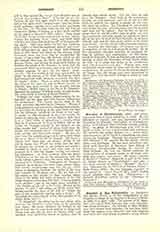

Benedict of San Philadelphio (or BENEDICT THE MOOR), Saint, b. at San Philadelphio or San Fradello, a village of the Diocese of Messina in Sicily, in 1526; d. April 4, 1589. The parents of St. Benedict were slaves from Ethiopia who were, nevertheless, pious Christians. On account of their faithfulness their master freed Benedict, the first-born child. From his earliest years Benedict was very religious and while still very young he joined a newly formed association of hermits. When Pope Pius IV dissolved this association, Benedict, called from his origin Aethiops or Niger, entered the Reformed Recollects of the Franciscan Order. Owing to his virtues he was made superior of the monastery of Santa Maria de Jesus at Palermo three years after his entrance, although he was only a lay brother. He reformed the monastery and ruled it with great success until his death. He was pronounced Blessed in 1743 and was canonized in 1807. His feast is celebrated April 3.
J. P. KIRSCH

